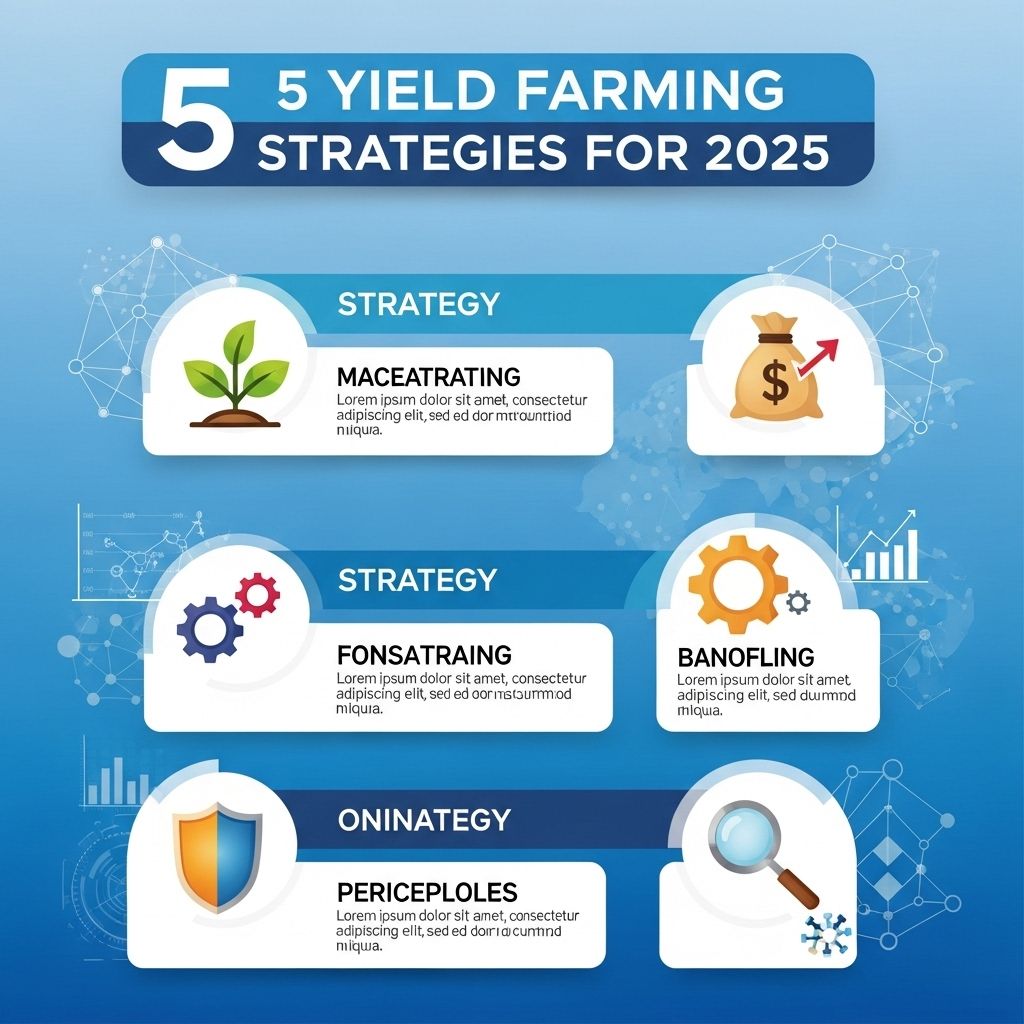The world of finance is evolving rapidly, and yield farming has emerged as a significant component in the decentralized finance (DeFi) ecosystem. With the potential to earn passive income through cryptocurrency assets, understanding different yield farming strategies has become essential for both seasoned investors and newcomers alike. As we look ahead to 2025, it’s important to explore not only the potential benefits but also the risks and nuances involved in yield farming. In this article, we will delve into five effective yield farming strategies that can help you maximize your returns while navigating this dynamic landscape.
Understanding Yield Farming
Before we dive into specific strategies, let’s clarify what yield farming actually entails. Yield farming is the process of lending or staking your cryptocurrency assets in exchange for rewards. These rewards can come in the form of additional tokens or interest on your invested assets. The yield farming ecosystem typically operates on various decentralized platforms and protocols.
Key Concepts in Yield Farming
- Liquidity Pools: These are pools of tokens provided by liquidity providers that facilitate trading on decentralized exchanges.
- APY (Annual Percentage Yield): This metric indicates the potential annual return on an investment, factoring in compounding.
- Impermanent Loss: A risk associated with providing liquidity, where the value of your assets may decrease compared to holding them due to market fluctuations.
1. Diversifying Across Multiple Protocols
One of the most effective strategies to mitigate risk in yield farming is to diversify your investments across multiple DeFi protocols. By doing so, you can take advantage of various yield opportunities while reducing your exposure to a single platform’s risks. Consider the following:
Benefits of Diversification
- Spreads risk across different assets and platforms
- Increases potential returns by tapping into multiple high-yield opportunities
- Provides a hedge against platform-specific vulnerabilities
How to Diversify
- Research and select reputable DeFi platforms.
- Allocate a portion of your assets to each protocol based on their yield offerings.
- Monitor performance and adjust allocations periodically.
2. Utilizing Stablecoins for Lower Volatility
Stablecoins, pegged to fiat currencies, can be an excellent choice for yield farmers looking to minimize volatility. By using stablecoins such as USDC, DAI, or USDT, investors can earn stable returns without the price fluctuations common in the cryptocurrency market.
Advantages of Using Stablecoins
- Reduced exposure to market volatility
- Consistent yield rates across various platforms
- More predictable earnings, making it easier to plan finances
Example of a Stablecoin Yield Farming Strategy
| Stablecoin | Yield Protocol | APY |
|---|---|---|
| USDC | Compound | 2.5% |
| DAI | Aave | 3.2% |
| USDT | Yearn.finance | 4.5% |
3. Leveraging Liquidity Mining Programs
Liquidity mining is a popular yield farming strategy that allows users to earn governance tokens in addition to interest by providing liquidity to decentralized exchanges. In 2025, many DeFi platforms will likely implement even more attractive liquidity mining programs.
How Liquidity Mining Works
- Provide liquidity to a designated trading pair on a platform.
- Earn a share of the transaction fees plus additional tokens as rewards.
Tips for Successful Liquidity Mining
- Choose pools with high trading volumes to maximize transaction fee earnings.
- Assess the reward structure carefully; higher yields might come with increased risks.
4. Engaging in Cross-Chain Yield Farming
As the blockchain ecosystem matures, cross-chain yield farming will gain traction. This strategy involves taking advantage of opportunities across different blockchain networks. By utilizing bridges and wrapped tokens, investors can optimize their yield farming strategies.
Benefits of Cross-Chain Yield Farming
- Access to higher yields available on less popular chains
- Diversification across multiple blockchain ecosystems
- Flexibility to move assets where yields are most favorable
5. Automated Yield Farming with Smart Contracts
Automation has revolutionized yield farming. In 2025, automated yield farming strategies using smart contracts will enable investors to earn passive income with minimal effort. These protocols automatically allocate funds to the best available yield opportunities.
Advantages of Automated Strategies
- Time-saving; reduces the need for constant monitoring
- Optimizes returns by automatically reallocating based on performance
- Reduces the risk of human error in decision-making
Popular Automated Yield Farming Platforms
- Yearn.finance
- Beefy Finance
- Harvest Finance
Conclusion
As we approach 2025, the yield farming landscape will continue to evolve, presenting new opportunities and challenges. By employing a combination of diversification, stablecoin strategies, liquidity mining, cross-chain farming, and automation, investors can position themselves for success in this dynamic environment. However, it is crucial to remain informed about the risks and conduct thorough research before diving into yield farming. The potential for high returns often comes with elevated risks, making prudent decision-making essential for long-term success.
FAQ
What is yield farming and how does it work?
Yield farming is a method of earning cryptocurrency rewards by providing liquidity to decentralized finance (DeFi) protocols. Users lock up their funds in smart contracts and earn interest or tokens based on their contributions.
What are the top yield farming strategies for 2025?
The top yield farming strategies for 2025 include leveraging liquidity pools, utilizing cross-chain farming, participating in governance tokens, staking stablecoins, and exploring emerging DeFi platforms.
How can I mitigate risks in yield farming?
To mitigate risks in yield farming, diversify your investments, conduct thorough research on protocols, use impermanent loss calculators, and only invest what you can afford to lose.
What role do stablecoins play in yield farming?
Stablecoins play a crucial role in yield farming by providing a less volatile asset for liquidity provision, allowing farmers to earn yield without the risk of significant price fluctuations.
Are there tax implications for yield farming in 2025?
Yes, there are tax implications for yield farming, as the rewards earned are typically considered taxable income. It’s important to keep accurate records and consult a tax professional.




